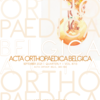Total hip replacements following acetabular fractures. 7 to 15 years clinical and radiological results
hip replacement ; acetabular fracture ; post traumatic arthritis.
Published online: Nov 22 2021
Abstract
This study is reporting the long term clinical and radiographic results of a group of 45 patients who underwent total hip arthroplasty following acetabular fractures. The study included 39 males and 6 females. The age of the patients ranged from 32 to 61 with a mean of 46.4 years. The indication for surgery was secondary osteoarthritis in 35 patients and avascular necrosis of the femoral head in the remaining ten. The follow up period ranged from 7 to 15 years with a median of 10.3 years. Uncemented total hip prostheses were used in 37 cases while 8 cases had hybrid prostheses with cemented cups and uncemented stems. Thirty patients (66.7%) needed autogenous acetabular bone grafting. There has been a statistically significant improvement from a preoperative mean Oxford hip score of 16 to a postoperative mean score of 39.8 (p < 0.001). At the end of follow up, two cases had revision for cup loosening. The complications included one case of transient sciatic nerve palsy, and two cases of heterotopic ossification. Currently, total hip replacement remains the best option for end stage post traumatic arthritis. There are technical challenges associated with this replacement surgery which the surgeon should be aware of.
